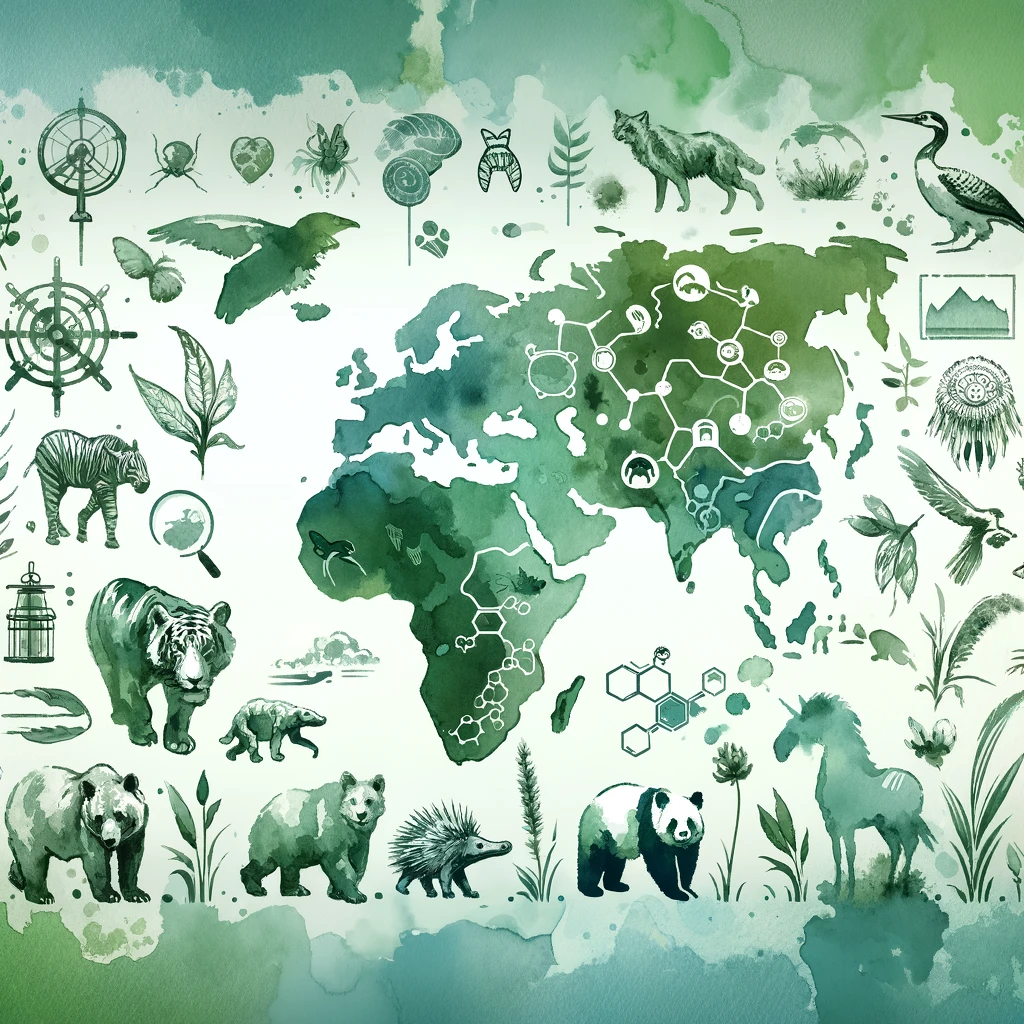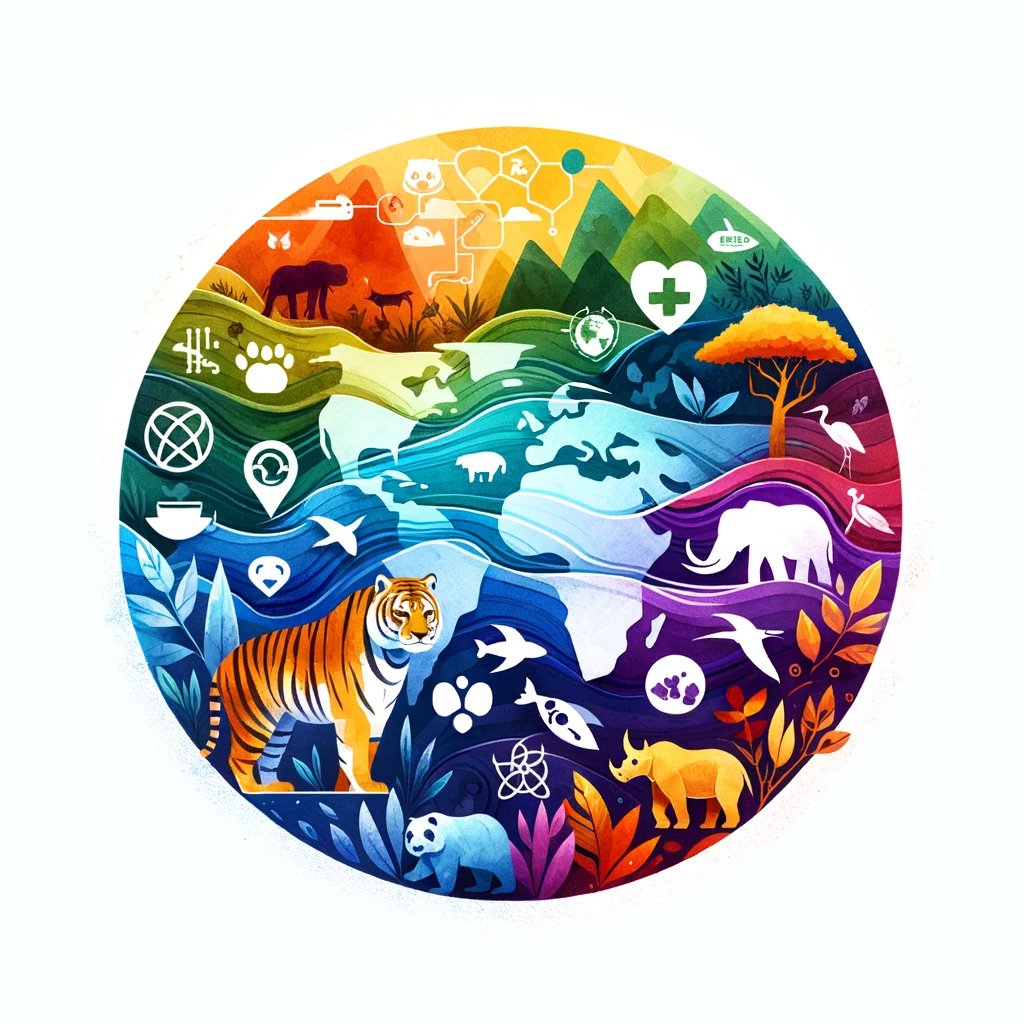Biodiversity encompasses the variety of life on Earth and is crucial for ecosystem stability, human well-being, and the health of the entire planet. The conservation of this biodiversity is aimed at protecting biodiversity the ensuring sustainability within the utilization of natural resources. The article looks into biodiversity hotspots, the peril of being an endangered species, protected areas, and the role of indigenous people in conservation.
- Habitat destruction, climate change, overexploitation of resources, pollution, invasive species, and agricultural practices are major factors contributing to biodiversity loss.
- Specific programs like Project Tiger, Project Elephant, and the National Mission for Clean Ganga in India target the conservation of flagship species and critical ecosystems.
- In-situ conservation (conserving species in their natural habitats) and ex-situ conservation (preserving components of biodiversity outside their natural habitats, such as in zoos, and seed banks) are key strategies.

Biodiversity Hotspots
Biodiversity Hotspots are those regions that are rich in unique species and significantly threatened by human activities. An area qualifies as a biodiversity hot spot if it satisfies the following two criteria:
- It must contain at least 1,500 species of vascular plants as endemics (species found nowhere else on Earth).
- It must have lost at least 70% of its original habitat.
Major Hotspots
Amazon Basin:
- Location: Spanning several South American countries, including Brazil, Peru, and Colombia.
- Biodiversity: Home to about 10% of all known species, including jaguars, pink river dolphins, and an incredible variety of plants and insects.
- Threats: Deforestation, mining, agriculture, and climate change.
- Conservation Efforts: Protected areas, reforestation projects, and policies to curb illegal logging.
Congo Basin:
- Location: Central Africa, encompassing parts of six countries, including the Democratic Republic of Congo and Cameroon.
- Biodiversity: Includes species such as gorillas, forest elephants, and okapis.
- Threats: Logging, poaching, mining, and political instability.
- Conservation Efforts: International collaborations, anti-poaching measures, and sustainable forestry initiatives.
Eastern Himalayas:
- Location: Spans Bhutan, northeastern India, and southern Tibet.
- Biodiversity: Hosts species like the red panda, snow leopard, and a diverse range of flora.
- Threats: Habitat loss, climate change, and overgrazing.
- Conservation Efforts: Community-based conservation programs, protected areas, and transboundary conservation initiatives.
Endangered Species and Extinction
Causes of Species Decline
- Habitat Loss: Deforestation, urbanization, and agricultural expansion lead to the destruction of natural habitats.
- Pollution: Chemicals, plastics, and other pollutants harm wildlife and degrade habitats.
- Overexploitation: Overfishing, hunting, and poaching deplete species populations.
- Climate Change: Alters habitats and food sources, making it difficult for species to survive.
- Invasive Species: Non-native species can outcompete, prey on, or bring diseases to native species.
Case Studies
- Tigers:
- Causes of Decline: Habitat destruction, poaching for fur and body parts, and human-wildlife conflict.
- Conservation Efforts: Anti-poaching measures, habitat restoration, and awareness campaigns.
- Pandas:
- Causes of Decline: Habitat fragmentation, low reproductive rates, and reliance on bamboo.
- Conservation Efforts: Breeding programs, habitat conservation, and international cooperation.
- Rhinos:
- Causes of Decline: Poaching for horns, habitat loss, and political instability.
- Conservation Efforts: Anti-poaching units, legal protections, and translocation projects.
Global Initiatives
- IUCN Red List: The International Union for Conservation of Nature (IUCN) Red List categorizes species based on their extinction risk, helping prioritize conservation efforts.
- CITES: The Convention on International Trade in Endangered Species of Wild Fauna and Flora regulates international trade to ensure it does not threaten species’ survival.
Protected Areas and Reserves
Protected areas and reserves are crucially needed for biodiversity and its conservation, safe havens for a large number of species, and preserving natural habitats. This zone plays an important role in tempering anthropogenic negative impacts and is extremely essential for the survival and health of various ecosystems, which is vital for global environmental balance. Strategic management and expansion have been considered indispensable actions in safeguarding Earth’s biodiversity for future generations.
Types of Protected Areas
- National Parks: Large natural areas set aside for wildlife preservation and public enjoyment. Example: Yellowstone National Park, USA.
- Wildlife Sanctuaries: Areas that provide habitat protection for specific species. Example: Bharatpur Bird Sanctuary, India.
- Biosphere Reserves: Sites recognized under UNESCO’s Man and the Biosphere Programme, combining conservation with sustainable use. Example: Sunderbans Biosphere Reserve, India.
Effectiveness and Challenges
- Effectiveness: Protected areas can significantly reduce habitat loss, protect biodiversity, and provide safe havens for endangered species.
- Challenges: Inadequate funding, insufficient enforcement, human-wildlife conflict, and pressure from development and resource extraction.
Role of Indigenous Communities
Indigenous communities are important to nature conservation, normally being the first custodians of their lands. Their traditional knowledge contributes to ecological balance and ecosystem resilience. Recognition and integration of their wisdom within the conservation strategies become quite indispensable for effective and inclusive environmental stewardship.
Traditional Knowledge in Biodiversity Conservation
Indigenous communities have managed their environments sustainably for centuries, using traditional knowledge to maintain biodiversity and ecosystem health.
Successful Examples:
- Amazonian Tribes: Indigenous tribes in the Amazon use traditional practices such as shifting cultivation and sacred groves to conserve biodiversity. Their involvement in conservation initiatives has led to the establishment of indigenous reserves and protected areas.
- African Conservancies: In Kenya and Namibia, community conservancies involve local communities in wildlife management and ecotourism, providing economic benefits and enhancing conservation efforts.

Conclusion
Biodiversity and its conservation are the most vital aspects for the continuance of life on Earth, and both have to go hand in glove with each other for the sake of the very existence of this planet. Biodiversity hotspots, causes, and effects of species must decline, and the role of protected areas, and invaluable inputs by Indigenous communities are well understood to realize effective conservation strategies. In-depth knowledge of all the above-mentioned topics is highly essential to answer the questions relating to the environment and ecology in the examination.
| Biodiversity and Conservation UPSC Notes |
| 1. Biodiversity ensures ecosystem stability and supports human well-being through the provision of vital natural resources. 2. Protection of diverse species, maintenance of sustainable use of natural resources, and ecological balance. 3. To qualify as a biodiversity hotspot, a region needs to have at least 1,500 endemic plant species that have lost over 70% of their original habitat. 4. The main causes include habitat loss, pollution, overexploitation, and various impacts on climate change. 5. Protected areas play a vital role in biodiversity conservation including national parks, wildlife sanctuaries, and biosphere reserves. 6. The contribution of indigenous knowledge and practices plays a very important role in the sustainable conservation of biodiversity and the management of ecosystems. |

